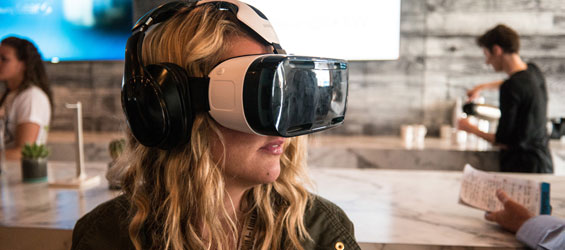
Photo Credit: Nan Palmero/flickr
Virtual Reality (VR) is not a new concept – there have been plenty of attempts to bring this technology to the mainstream through video games, the film industry and even amusement park rides, but what about marketing?
There are setbacks to using virtual reality, such as affordable hardware that doesn’t cause nausea or content that draws users to VR. As the format of virtual technology continues to evolve, we’re seeing more innovative and conventional implementation in the digital world. With big tech companies like Google/YouTube and Facebook utilizing virtual reality technology on their platforms, we’re likely to begin seeing it more on a regular basis.
Currently trending are VR mobile apps – Vrse being the most notorious. Spherical or 360-degree videos can be accessed on our devices, which eliminates the need for headsets. With this mobile-friendly approach, users can move their devices around to view corresponding visuals of the scenario. These videos are produced with compiled footage from dozens of different camera angles, coming together to create a virtual world.
So, how can digital marketers use virtual reality?
Brands can use it to immerse their audience in an experience, such as realistic virtual tours in place of brochures for resorts or venues. Virtual reality can also be used to let consumers experience a product. Think test-driving a Tesla without leaving your living room.
An exciting possibility for the future of virtual reality is the fact that it will allow organizations to extend product or service offerings. Some brands are creating their own branded viewers and apps, while others are teaming up with existing VR producers to create a unique experience.
Purpose marketing possibilities are limitless.
Shoe social enterprise, TOMS recently launched a Virtual Giving Trip on Vrse, which allows users to “journey to Peru to see the incredible work of our Giving Partners do and spend time with some of the children who receive our shoes.”
So far, we’ve seen brands make attempts at using the technology for a single campaign, but we predict that as the format improves companies will be more inclined to use virtual reality in their overall digital marketing strategies.
